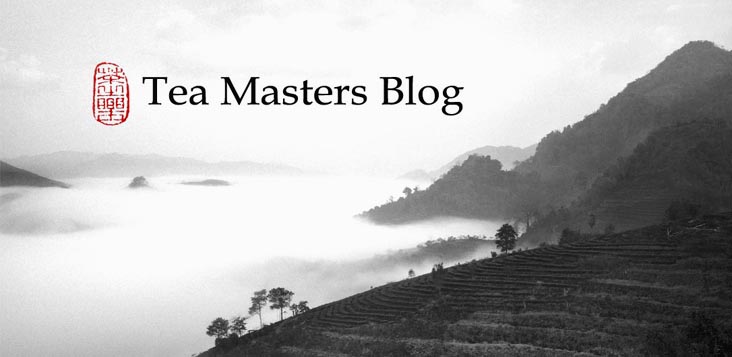Cultivar: Luanze Oolong
Harvested by hand on November 7th, 2013
Origin: Shan Lin Shi, Central Taiwan
Elevation: 1500 meters
Process: Hungshui Oolong, medium roasted in a bamboo basket.
I brew these leaves in the early morning hours, in southern Taiwan, just before breakfast. It has delicious notes of ripe fruit and sugar cane. The aftertaste is long and has flavors of fire from the recent roasting. But they are less present than with the 'strong' roast version or a competition style Dong Ding Oolong. The remaining feeling in the mouth is pure and energetic.Each brew comes out somewhat different. Roasted Oolongs are more challenging to brew well than unroasted ones. Even with a neutral porcelain gaiwan, I obtain different results, depending on my technique and my attention level. This became obvious when I brewed this tea and a Dong Ding (from Yong Long) Hungshui Oolong for my brother-in-law over Chinese New Year. The first day, he preferred this Shan Lin Shi, but the second day, he liked the Dong Ding better.
So, which is the better tea? It's impossible to say for sure when brewing with skill. It may be that my brewing has highlighted the strengths of a tea, or it's a mistake in my technique that causes the tea to underperform. That's why tea competitions take away the brewing skills by standardizing the brewing: 3 grams of tea are brewed for 6 minutes with boiling water poured with the same movement. Using such a standard is the most reliable and objective way to judge a tea. Otherwise, it's not (only) the tea that gets judged, but (also) your brewing. For similar teas, this could easily tip the winner one way or another.
3 grams of tea is all it takes to judge a tea and compare it to other teas in an objective way. This is the first step to understand your teas and to select leaves of superior quality.
This will help you understand how to use your skills to achieve better results when using your gongfu cha approach.













No comments:
Post a Comment